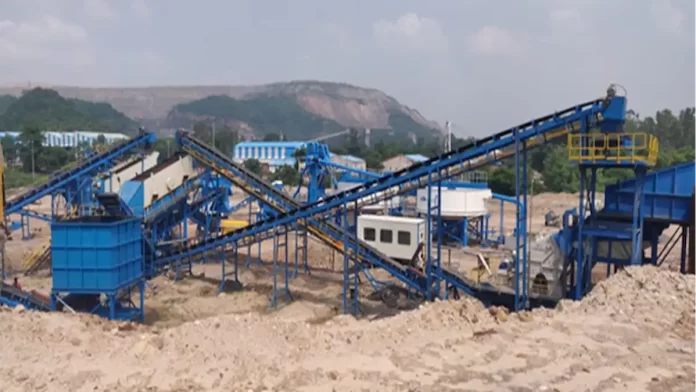Coal India Ltd is set to launch the M-Sand Projects in a Big Way as per a press release by Minisry of Coal on Friday.
Manufactured Sand (M-Sand) from overburden of coal mines have several benefits in terms of economy and environmental sustainability.
Legal Framework
Sand is classified as a “minor mineral”, under The Mines and Minerals (Development and Regulations) Act, 1957 (MMDR Act) and administrative control over minor minerals vests with the State Governments, and accordingly, regulated through State specific rules.
Need for M-Sand
Due to high demand, regulated supply and complete ban of sand mining during monsoon to protect river ecosystem, finding alternative to river sand became necessary.
Sand Mining Framework (2018) prepared by Ministry of Mines envisages alternative sources of sand in the form of Manufactured Sand (M-Sand) from crushed rock fines (crusher dust), sand from Overburden (OB) of coal mines.
During Opencast mining the overlying soil and rocks are removed as waste to extract coal and the fragmented rock (Overburden or OB) is heaped in dumps.
Most of the waste is disposed off at the surface which occupies considerable land area and requires extensive planning and control to minimize the environmental impact of mining.
Coal India Ltd (CIL) has envisaged to process the overburden rocks for sand production in mines where OB material contain about 60% sandstone by volume which is harnessed through crushing and processing of Overburden.
OB to M-Sand initiative of CIL is facilitating processing of waste overburden in its OC Mines.
M-Sand Benefits
Manufactured Sand (M-Sand) from overburden of coal mines have several benefits in terms of economy and environmental sustainability, including:
- Cost-effectiveness: Using manufactured sand can be more cost-effective than using natural sand, as it can be produced in large quantities at a lower cost.
- Consistency: Manufactured sand can have a consistent grain size and shape, which can be beneficial for construction projects that require a specific type of sand.
- Environmental benefits: Using manufactured sand can help to reduce the need for mining natural sand, which can have negative environmental impacts. Additionally, using the overburden from coal mines can help to repurpose materials that would otherwise be considered waste.
- Reduced water consumption: Using manufactured sand can help to reduce the amount of water required for construction projects, as it does not require washing before use.
- Better workability: Manufactured sand is more angular and has a rougher surface, which makes it more workable for construction projects.
- Land occupied by OB dumps can be freed for alternative useful purposes
- Recovery of sand from waste overburden is the best out of waste product
- Commercial sale of produced sand can generate additional revenue for coal companies
- Apart from commercial use, sand produced shall also be consumed for sand stowing in Underground Mines enhancing safety & conservation
- Lesser Sand extraction from river will reduce erosion of channel bed & banks and protect water habitat
- Help maintaining water table
Coal India Initiatives
To expedite OB to sand initiative, CIL has prepared a Model Bid Document for installing more such plants across subsidiaries in which terms and conditions have been modified for wider participation.
The successful bidder shall have liberty to decide sale price and marketability of sand produced.
Apart from OB to sand initiative, WCL has sold 1,42,749 m3 of OB for road construction, formation for Railways, Land Base levelling and other uses and earned Rs.1.54 Cr. SECL has also used 14,10,000 m3 of OB for Railway Siding and FMC projects.
Other subsidiaries of CIL are also taking similar initiatives to utilise OB for other purposes.
There is need to focus on Cost-effective & High Quality Sand Production keeping in mind environmental sustainability.
